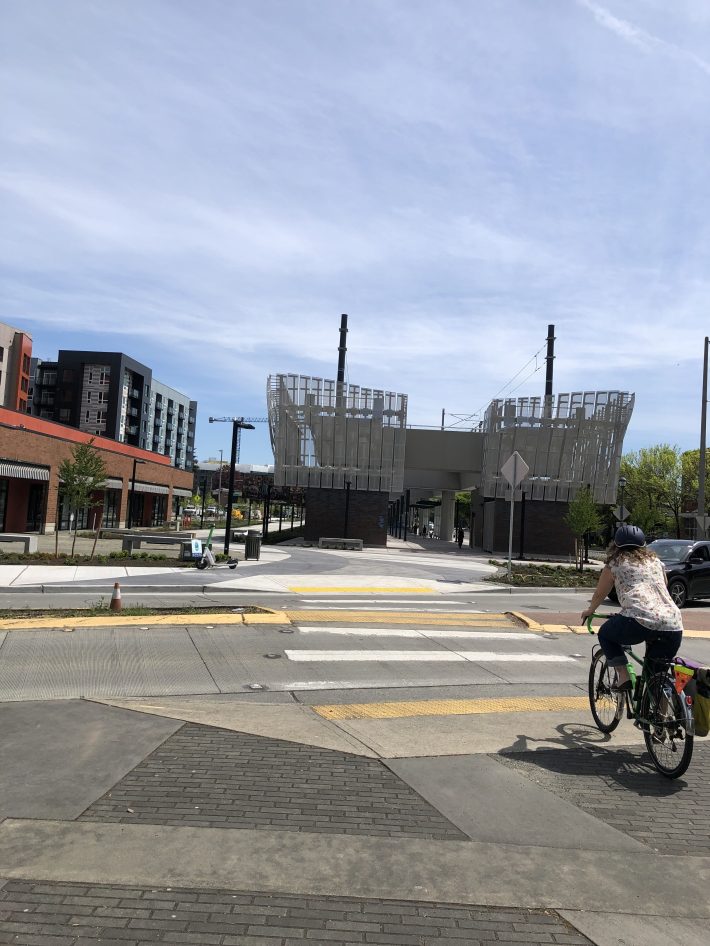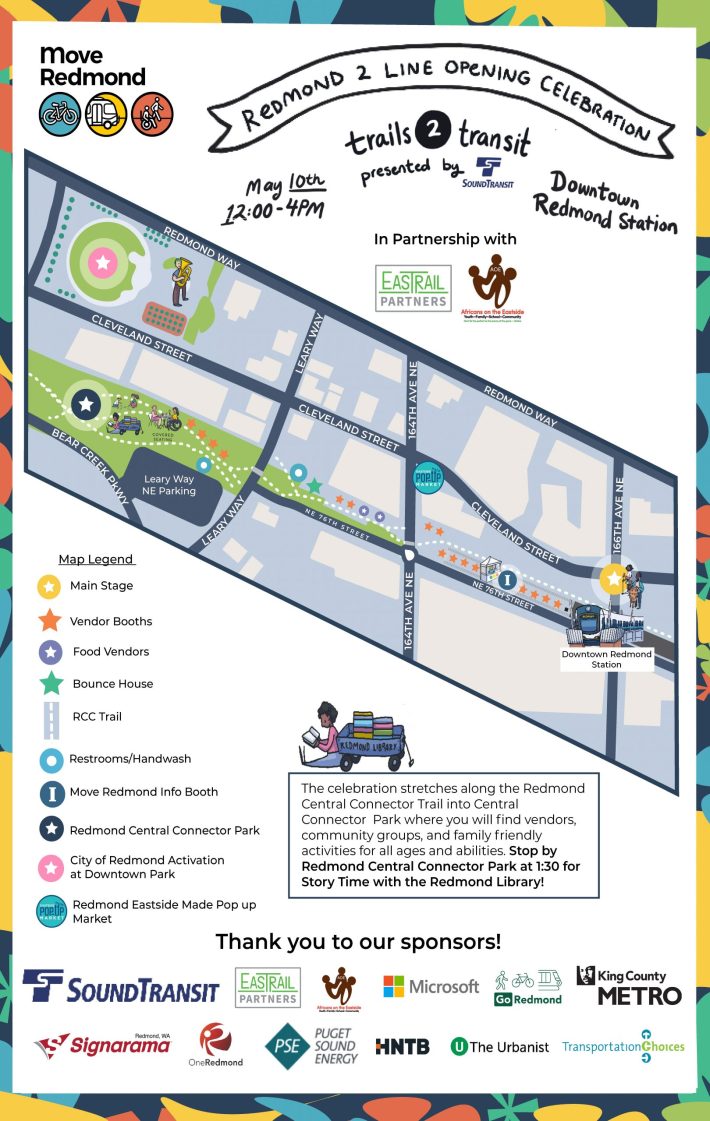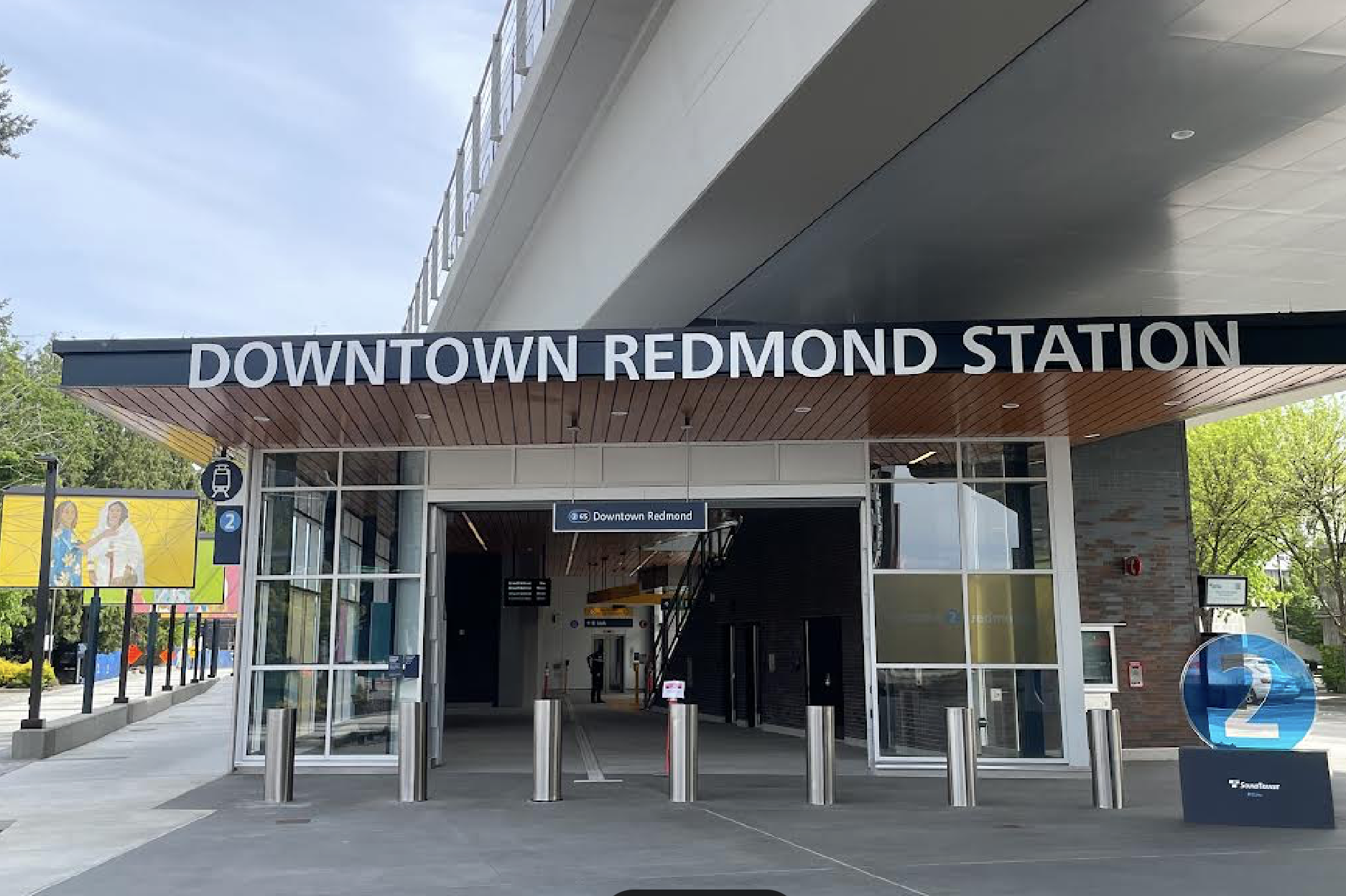A Seattle suburb is making big strides towards transforming into a true urban center — and advocates in the region think it offers lessons for other bedroom communities to evolve beyond car dependence.
This weekend, the city of Redmond will christen two new light rail stations in its downtown and nearby Marymoor Park, along with a network of new trail connections that will allow residents to reach those stations and the state's stunning recreational trail network without a car. Those openings closely followed the adoption of a new comprehensive street safety plan just three weeks ago, as well as the announcement that the city had joined the National Association of City Transportation Officials to further accelerate progress on mobility reforms.

Local advocates say that's a seismic shift for a town that's long been known for emptying out at five o'clock when workers poured out of major tech company campuses like Microsoft and Nintendo to drive home for the day, thanks to Redmond's position at the terminus of Highway 520. And paired with new investments in housing inspired in part by the new stations, they hope that more Redmonites will both commute in by train and stay awhile to enjoy their community on foot or bike.
"Sometimes in other suburbs, you see this fear or hesitation of bringing in new transit options, but Redmond has done the complete opposite," said Move Redmond Executive Director Kelli Refer, which advocates for mobility choice in the region. "But we said, 'Yes; we want light rail, we want more options for folks to get here. And we also want all of that to connect with walking and biking routes and investing in our trail network.'"
'Yes, we can change'
Refer says Redmond's rapid progress is the culmination of years of work, most notably the 2016 passage of a transportation expansion ballot measure known as Sound Transit 3, of which the new extension will mark the first rail projects to actually carry passengers. Celebrations of that November win, though, was tempered by Donald Trump winning his first term in office at the same election.
Rather than let a stormy outlook in the other Washington temper their hopes, though, Refer says Redmond locked in for the long term and focused on local strategies to urbanize their community. Even before the trains were running, the region has been working hard to make them the backbone of a people-centered downtown, building more apartments near the new stations than any other zip code in Washington, and the 10th-most of any ZIP code in the entire country.
Late last year, city leaders doubled down on that progress by updating the city's comprehensive growth plan, legalizing "missing middle" building types like duplexes, townhomes, and mixed-use buildings with businesses on the ground floor. And much of that growth will be concentrated around the light rail stations, especially after it's connected into Seattle later this year, in addition to its current connections at nearby Bellevue.
Refer particularly credits former mayor and King County Council member Claudia Balducci, who recently championed Redmond's transition from a mix of tech magnates and "chicken farms" to an "urban vision" in the Seattle Times.
"Before the light rail arrived, there were some visionary leaders in the city of Redmond who said, 'Yes, we can, we can change, and we can embrace transit,'" she adds. "And then as the plan and funding and construction was happening for transit, there was a focus on housing, too."

Refer acknowledges that Redmond hasn't quite completed its urban metamorphosis yet. The new light rail station near Marymoor Park, for instance, will still be flanked by 1,400 parking spaces, which she argues may be necessary for a community still proximal to acres of rolling farmland — but which journalist Nicholas Deshais derided as "more parking garage than light rail station."
Still, she points out that the downtown station doesn't include any major parking component, and that on balance, Redmond is taking more steps towards becoming a bona fide city than it is towards perpetuating the "park-and-ride mentality [that] still dominates the design of many new stations," as the Urbanist's Ryan Packer once memorably put it.
"From my perspective, we really need to be focused on station access for people who walk and bike and connect via the bus. ... Ideally, we would have a better-funded rural transit network, but that's not where we are right now," she adds. "So Park and Ride does play an important role there. But [it's also] really important to prioritize station access for all the people who are non-drivers, [and] who don't want to use their car to get to light rail. And that's really where the trail and transit connections are super critical."

Refer recognizes that Redmond's multimodal success is, at least in part, the product of privilege. Not every U.S. suburb has its unique combination of wealthy corporate campuses, a blue state legislature, and a thriving nearby megacity to which its residents are eager to connect, and many certainly won't have the good timing to finish the final stages of multiple major transit projects just before a Democratic administration steps down in DC. When dancers, musicians, and fashion designers take to the stage to celebrate the new stations this weekend — many of whom belong to the city's vibrant African community — Refer knows they'll be doing so against the backdrop of nationwide attacks on marginalized minority groups, as well as the shared and active modes upon which they disproportionately rely.
Still, she argues even progressive regions like hers have their share of challenges ahead. And she's hoping their example can motivate other suburbs to embrace a bold vision for the future anyway — even in what now feel like dark times.
"We're all really concerned, and advocates are watching; Are these dollars going to get obligated? Are they going to go through?" she adds. "[At the same time, while] it might take longer, I do think there's no harm in trying to build the momentum in the ground game now. It takes so long to put together measures that voters will pass, and then to plan and build these projects. We have to believe that this is something worth fighting and organizing for.""






